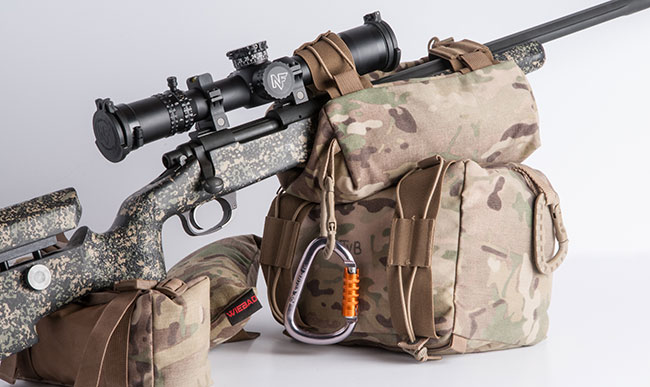Equipment Requirements for PRS Style Matches

Quick Reference
Required Equipment
- •Rifle capable of safely firing the ammunition you intend to use
- •Rifle scope with adjustable elevation and windage
- •Ammunition (match grade recommended)
- •Eye and ear protection
- •Chamber flag
Recommended Equipment
- •Bipod or shooting bag
- •Rear bag
- •Rangefinder
- •Shooting mat
- •Weather meter
Introduction
One of the most common questions we get from new shooters is "What equipment do I need to compete in a precision rifle match?" This guide will help you understand the essential gear needed to get started in PRS-style competitions without breaking the bank.
Rifle Requirements
For most PRS-style matches, you'll need a rifle chambered in a caliber that meets the minimum power factor requirements. Typically, this means a centerfire rifle chambered in .223 Remington or larger. Popular calibers include:
- 6.5 Creedmoor
- 6mm Creedmoor
- 6.5 PRC
- 308 Winchester
- 6BR and variants
Your rifle should be equipped with a reliable action, a good trigger (adjustable preferred), and a stock or chassis system that fits you well. Most competitors use bolt-action rifles, though some divisions allow semi-automatic rifles.
Optics
A quality scope is arguably more important than the rifle itself. For PRS-style competitions, you'll want:
- Magnification range of at least 4-16x, with many competitors preferring 5-25x or similar
- Front focal plane reticle (strongly recommended)
- Exposed elevation and windage turrets with positive clicks
- Reticle with mil or MOA-based holdover features
- Zero stop or return-to-zero feature
Popular scope manufacturers among competitors include Vortex, Nightforce, Kahles, Schmidt & Bender, and Leupold, though many other brands offer suitable options at various price points.
Support Equipment
Beyond your rifle and scope, you'll need:
- Bipod or shooting bag: To support the front of the rifle
- Rear bag: To support the stock
- Ammunition: Match-grade ammunition or quality handloads
- Shooting mat: For prone positions
- Range finder: To confirm distances (if allowed by match rules)
- Weather meter: To monitor wind conditions (optional but helpful)
- Data book or ballistic calculator: To track your dope
Safety Equipment
Safety is paramount in any shooting sport. Always bring:
- Eye protection: ANSI-rated shooting glasses
- Ear protection: Quality earplugs or earmuffs (electronic preferred)
- Chamber flag: Required at most matches to indicate an empty chamber
Starting on a Budget
If you're just getting started, focus on these priorities:
- A reliable rifle in an appropriate caliber
- The best scope you can afford
- Quality ammunition
- Basic support equipment (bipod and rear bag)
You can add specialized equipment as you gain experience and identify your specific needs. Many matches have loaner gear available for new shooters, and fellow competitors are often willing to let you try their equipment.
Conclusion
Remember that skill and practice are more important than having the most expensive gear. Start with quality fundamentals, learn your equipment well, and upgrade as needed based on your experience. The precision rifle community is welcoming to new shooters, so don't hesitate to ask questions at matches.
We hope to see you at a Bolt Gun Nation match soon!
Related Resources
- •PRS Rulebook
Official Precision Rifle Series rulebook with equipment divisions and regulations.
- •NRL Rulebook
National Rifle League official rulebook with equipment guidelines.
- •Precision Rifle Blog
In-depth articles on precision rifle equipment and gear reviews.

Joe Gurule
Joe is an experienced precision rifle competitor with extensive knowledge of competition gear and equipment. With years of experience in the field, he provides practical advice for shooters of all skill levels.